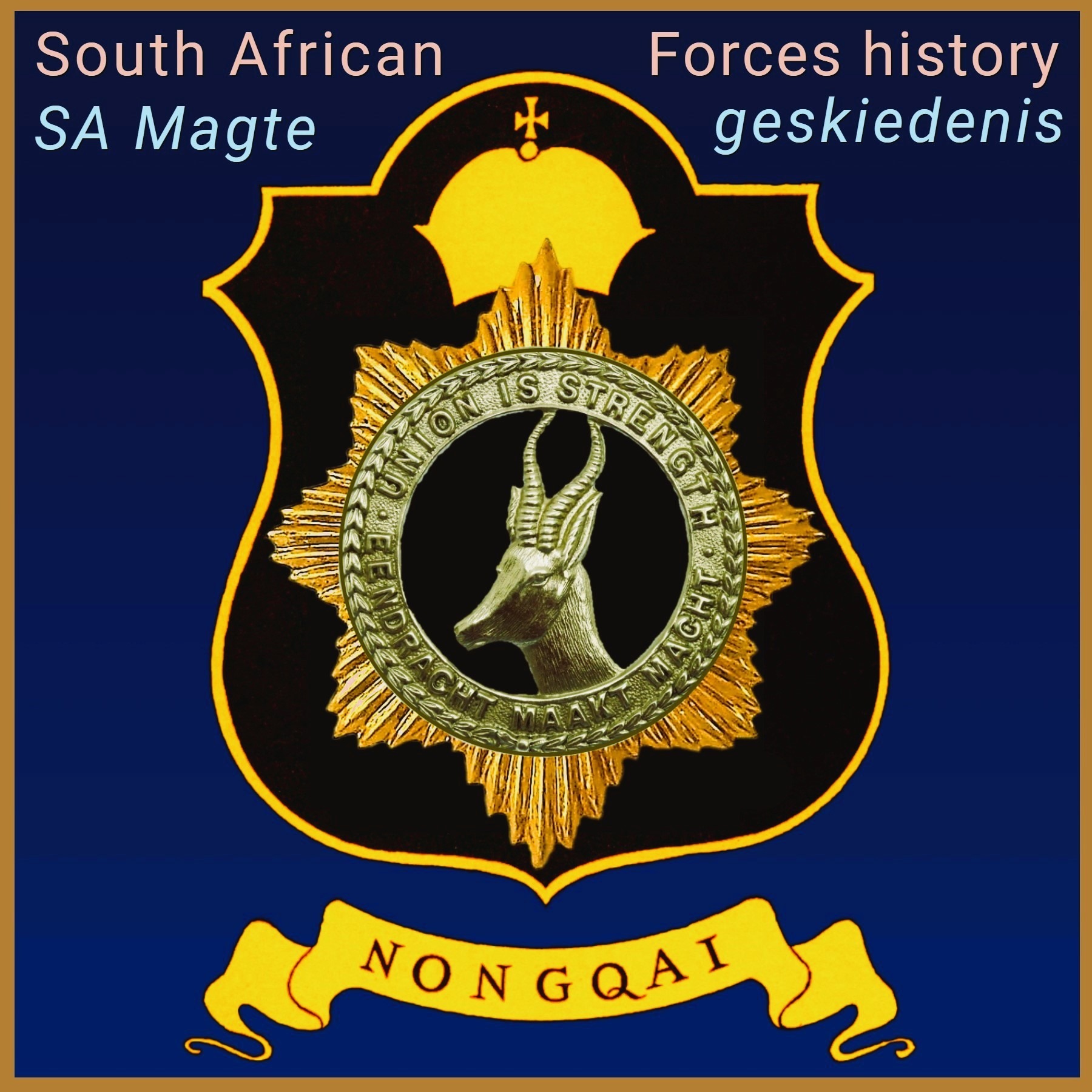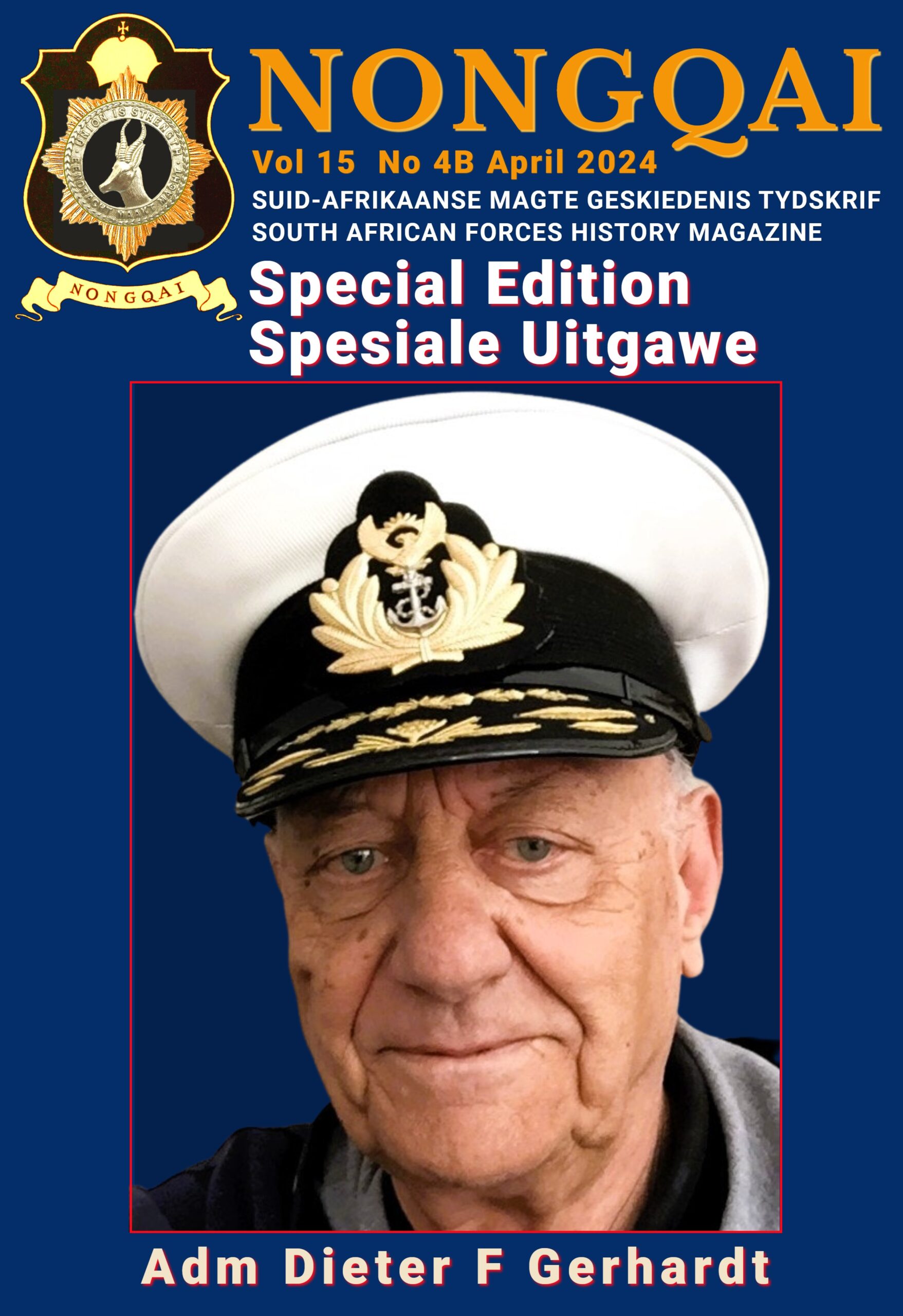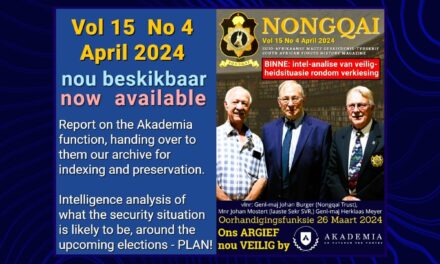ABSTRACT: Nongqai Dieter Gerhardt Spy Case Special Edition – South African Navy Commodore (as he was then) Dieter Felix Gerhardt was arrested as a spy for the Soviet GRU in January 1983, and subsequently found guilty of high treason. This new case study, undertaken by South African intelligence experts with the cooperation of now admiral Gerhardt, has as primary purpose to consider the reasons why Dieter Gerhardt and Ruth Johr (his wife) became GRU spies in the SADF, i.e. their motivation for betraying their country, and further to assess Dieter Gerhardt’s approach and methodology, his access to intelligence targets, and then to analyse the damage that was done by their spying activities.
FOCUS KEYWORD: NONGQAI DIETER GERHARDT SPY CASE SPECIAL EDITION
KEYWORDS: Dieter Felix Gerhardt; Ruth Johr, South African Navy, SADF; SAP-SB; CIA; FBI; NATO, USSR, GRU;
AUTHORS: Henning van Aswegen, Walter Volker
NONGQAI DIETER GERHARDT SPY CASE SPECIAL EDITION
BRIEF BACKGROUND
In this Special Edition the authors provide a scientific description of the phenomenon of intelligence and the conditions under which espionage was used by the agencies of the Soviet Union to obtain military information on their main enemy, the North Atlantic Treaty Organisation (NATO), but also of the South African Defence Force (SADF), who was in the enemy camp and at the time a major regional power. They illustrate how the Russian military intelligence service, GRU, was able to recruit and handle a senior officer in the SADF, Dieter Gerhardt, and his wife, co-conspirator and courier, Ruth Johr, who were not double agents, but who were willingly and wittingly engaged in the conduct of espionage against their country. Several other examples of Soviet espionage activities in South Africa exist – such as the Yuriy Loginov (1967) and the Aleksei Kozlov (1981) cases.
This article is not primarily intended to be an academic treatise or research document, and therefore unnecessary references have been dispensed with. The primary purpose of this case study was to consider the reasons why Dieter Gerhardt and Ruth Johr became GRU spies in the SADF, i.e. their motivation for betraying their country, and further to assess Dieter Gerhardt’s approach and methodology, his access to intelligence targets, and then to analyse the damage that was done by their spying activities. The secondary objective is to track Dieter Felix Gerhart’s meteoric rise in the SADF, from liaison officer with the SA weapons procurement corporation, to head of the Simon’s Town Naval Base, and how he started spying for GRU, the Russian military intelligence service. Added to this is our attempt to establish the reasons why his espionage activities were never exposed through the vetting processes or normal counterintelligence functions of the Military Intelligence Division (MID).
On 8 January 1983, one week after Gerhardt’s arrival in the United States (on 3 January), agents from the CIA, FBI and SIS entered his hotel room in New York and arrested the SA spy. A roll of film, containing information gathered by Gerhardt, was found in his possession. American intelligence services believe in polygraph tests, and subjected Gerhardt to such a test almost immediately after his arrest. Gerhardt later told SA investigators that his FBI, CIA and SIS interrogators in New York were never very polite to him, and that he hated them as much as they hated him. Gerhardt said that he has never forgiven the FBI, CIA and SIS for the way he was treated and interrogated. They believed he was an ultimate traitor, without a shred of dignity or honour and ruthless to boot – giving away anybody’s and everybody’s secrets and doing so for money.
The development of South Africa’s nuclear capabilities was a priority intelligence target for the Russian, American and British intelligence services ever since South Africa had started with uranium-enrichment experiments and programmes in the 1960s. South Africa produced its first highly enriched uranium in 1978, at a time when Dieter Gerhardt was in his prime as a Russian spy, and he wangled a visit to the top secret underground nuclear test site at Vastrap. The Vastrap test site was located 100 kilometres north of Upington; and was developed to conduct underground nuclear explosions. As a direct result of Gerhardt passing this information to GRU, the Soviets moved a spy satellite over the site in 1977.
At the time of his arrest, Gerhardt was Officer Commanding (Commodore) of the Simon’s Town naval base. In his previous post at SADF headquarters in Pretoria, Gerhardt’s job description was SSO Research in the Office of Force Development. As one of the directors of the Office of Force Development, a post he held for several years, Gerhardt had direct access to South Africa’s most sensitive and secretive military information and the documents South Africa exchanged with NATO countries.
The recruitment of Gerhardt as a GRU spy illustrates the importance the Russians attached to obtaining details of British, NATO and SA submarine and anti-submarine capabilities. International weapons sanctions against the South African government meant that the SADF bought weapons in secrecy on international arms markets. Gerhardt had direct access to top-secret information from the SADF about weapons procurement. Gerhardt used his position as SSO Research in the Office of Force Development to great effect to access information to which he did not otherwise and normally would have had access.
Gerhardt had access to and had visited the underground electronic labyrinth Silvermine, one of the most protected and most secret military facility in South Africa – similar in function and nature to the underground army facilities of Blennie, Boekenhoutskloof and Rooiwal in the vicinity of Pretoria. Silvermine is an electronic communications and intercept base equipped with the most modern equipment for monitoring aircraft and ships in the South Atlantic and the Indian Ocean – South Africa’s maritime eyes and ears.
During his twenty years as spy for the Soviet GRU, Gerhardt had passed 400,000 pages of classified South African, Israeli, British and NATO documents to the Russians. How was it possible that one man was able to gain access to such a vast hoard of information useful to our enemies? The answer is, because the combat preparedness of the SAN was closely linked and integrated with the combat capabilities and preparedness of the SADF, Gerhardt had direct access to gold dust information for the Soviet Union – South Africa’s combat plan for war.
After years in prison, Dieter Gerhardt was released in August 1992 as part of a deal reached between presidents FW de Klerk of South Africa and Boris Yeltsin of Russia.
TO READ THE FULL CASE STUDY, PLEASE CLICK ON THE RED BUTTON ABOVE TO DOWNLOAD AS A .PDF DOCUMENT.






